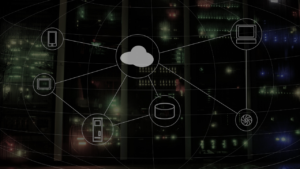Having an active firewall is often a source of peace of mind for many companies. The configuration is done, the rules are applied, and the dashboard shows everything "in green." There's a feeling of control. But security doesn't end with activating a tool—and relying solely on that is a more common mistake than it seems.
The firewall remains an important piece in the protection architecture, but the evolution of threats and the complexity of corporate environments have transformed what was once sufficient into just a starting point. Today, believing that it guarantees total security is like thinking that locking the front door eliminates all risks in the house.
Why a firewall is important, but insufficient.
The firewall is the first line of defense for any network. It creates rules for traffic, filters what enters and exits, and prevents inappropriate communications. However, this layer of protection was designed for a type of environment that no longer exists.
When the corporate model was centralized, with all systems within the same data center, the firewall made sense as the main barrier. Today, the environment is distributed: there are cloud servers, employees working from home, open APIs, and integrations with vendors. The perimeter has disappeared.
In such a context, the firewall remains necessary, but it is not sufficient. It controls traffic, but it lacks visibility into user behavior and application vulnerabilities. The risk shifts and depends on how much the company monitors, tests, and documents its defenses.
The risk of a false sense of security.
Often, the problem isn't technical, it's cultural. The company installs the firewall, validates the rules, and believes the environment is protected. However, without periodic audits, it quickly ceases to reflect reality.
Old rules remain active, temporary exceptions become permanent, and forgotten integrations remain open. Gradually, the firewall becomes a repository of uncontrolled permissions. And the worst part is that, visually, everything continues to "function."
This sense of security is dangerous because it disarms vigilance. While the dashboard shows everything as normal, vulnerabilities go unnoticed. When an incident occurs, the company discovers that the attack didn't come from outside, but from within its own environment—exploiting a rule that no one remembered existed.
What the firewall doesn’t cover
Even when properly configured, a firewall has technical limitations that decision-makers need to understand. It doesn't analyze anomalous user behavior, doesn't identify lateral movement after unauthorized access, and doesn't guarantee that logs are preserved for auditing.
These gaps are critical, especially in environments with multiple integrations and intensive use of cloud applications.
Furthermore, a firewall doesn't replace identity policies, network segmentation, log auditing, or incident response. All these layers complement each other. Security is sustained when there is coordination between them—and when each one is tested individually.
The problem is that few managers have this visibility. And that's where the role of technical auditing becomes essential.
How technical audits reveal vulnerabilities that firewalls don’t show.
Security audits are tests conducted by independent experts, capable of analyzing the environment from the perspective of an attacker. They are not limited to verifying whether the firewall is active, but also assess whether the rules are consistent, whether there are unnecessary open ports, whether log records are being collected correctly, and whether there are undetected signs of unauthorized access.
During these analyses, it is common to find vulnerabilities created by small exceptions that went unnoticed: a temporary rule open for remote support, an old IP address that is still allowed, or a deactivated server that remains exposed. None of these points appear on the main dashboard, but all represent a direct risk to operations.
The difference lies in the methodology. While firewall administration verifies if it is "working," a technical audit verifies if it is actually protecting. And this includes testing, comparing, validating, and documenting results with evidence.
Box Security: a diagnosis that goes beyond the surface.
At STWBrasil, Box Security combines environmental forensics analysis with a complete technical audit. The goal is to go beyond the tool level and observe the behavior of the system as a whole.
The process identifies gaps, inconsistencies, and configuration flaws that do not appear in conventional reports. Each point is documented with technical evidence, log records, and correction recommendations. This gives the manager a concrete view of what needs to be prioritized and what is already under control.
This type of diagnosis is especially important for companies that believe they are protected because they have all the basic controls active. Box Security shows that security is not measured by the quantity of tools, but by the integrity of the evidence that supports the protection.
Security is proven through testing, not by status.
The difference between a secure environment and a tranquil environment is simple: the former has been tested, the latter only appears stable.
Relying solely on the status of a tool opens the door to surprises.
An active firewall is part of the defense, but only continuous validation shows whether the rules are up-to-date, whether exceptions are still necessary, and whether logs can prove what happened in the event of an incident.
Companies that treat security as a process validate their controls periodically, record each review, and maintain auditable evidence. This ensures that, if something happens, the time spent will be on the response—and not on trying to understand what went wrong.
Conclusion
A firewall is indispensable, but it's not an absolute shield. It needs to be seen as part of a larger system that includes policies, audits, monitoring, and constant review.
A false sense of security is as big a risk as a technical failure. Digital security isn't proven by a green status, but by evidence.
Discover the vulnerabilities your firewall isn't covering with our environmental forensics analysis.





